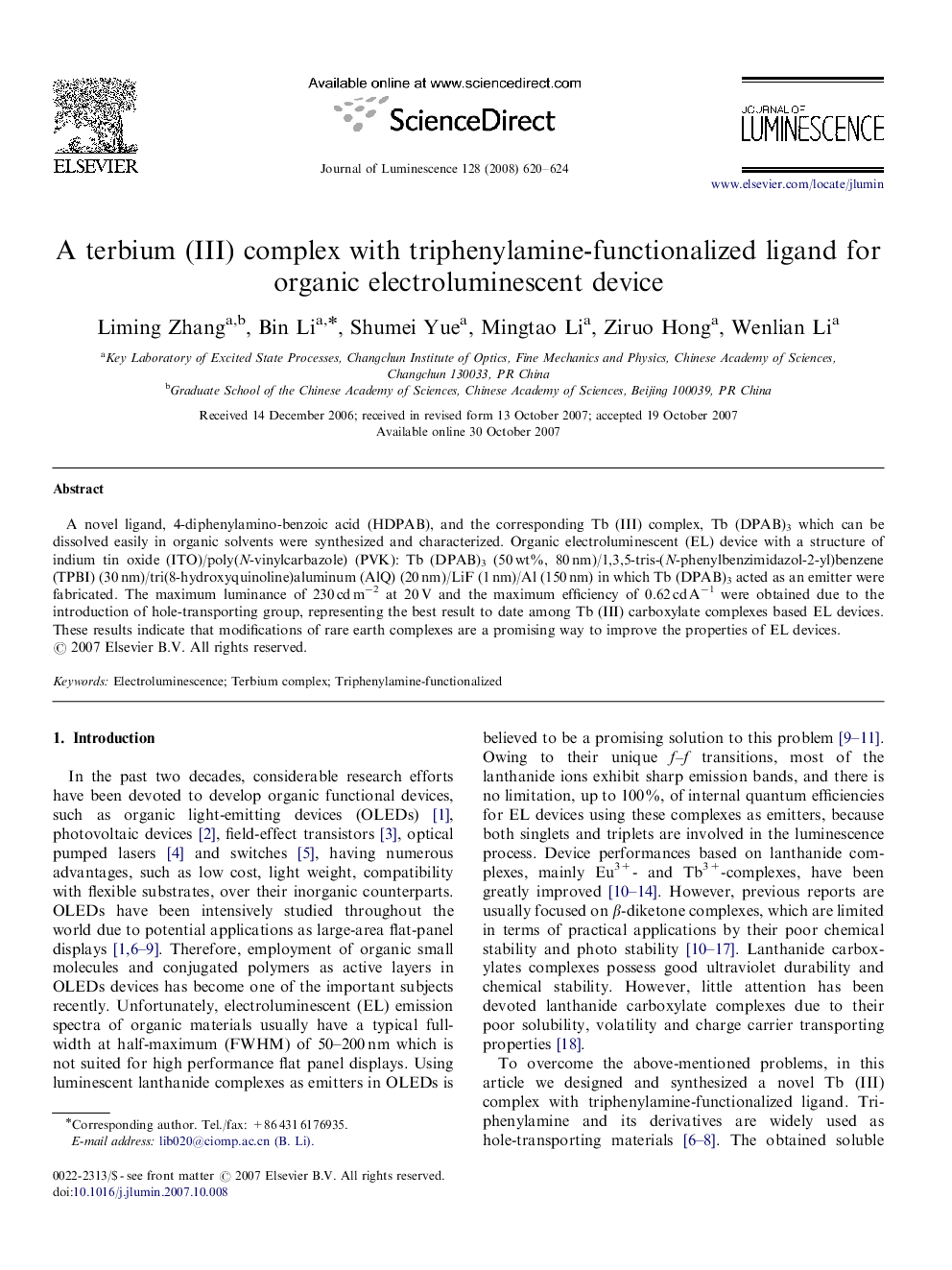| Article ID | Journal | Published Year | Pages | File Type |
|---|---|---|---|---|
| 5403746 | Journal of Luminescence | 2008 | 5 Pages |
Abstract
A novel ligand, 4-diphenylamino-benzoic acid (HDPAB), and the corresponding Tb (III) complex, Tb (DPAB)3 which can be dissolved easily in organic solvents were synthesized and characterized. Organic electroluminescent (EL) device with a structure of indium tin oxide (ITO)/poly(N-vinylcarbazole) (PVK): Tb (DPAB)3 (50 wt%, 80 nm)/1,3,5-tris-(N-phenylbenzimidazol-2-yl)benzene (TPBI) (30 nm)/tri(8-hydroxyquinoline)aluminum (AlQ) (20 nm)/LiF (1 nm)/Al (150 nm) in which Tb (DPAB)3 acted as an emitter were fabricated. The maximum luminance of 230 cd mâ2 at 20 V and the maximum efficiency of 0.62 cd Aâ1 were obtained due to the introduction of hole-transporting group, representing the best result to date among Tb (III) carboxylate complexes based EL devices. These results indicate that modifications of rare earth complexes are a promising way to improve the properties of EL devices.
Keywords
Related Topics
Physical Sciences and Engineering
Chemistry
Physical and Theoretical Chemistry
Authors
Liming Zhang, Bin Li, Shumei Yue, Mingtao Li, Ziruo Hong, Wenlian Li,
